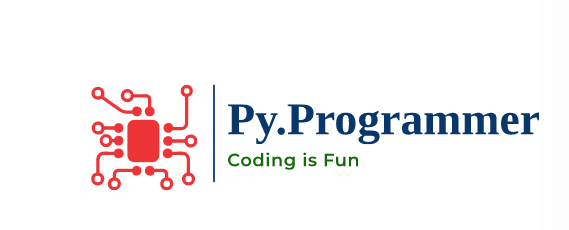INTRODUCTION
What is browser?
By definition a web browser is a software application that enables the user to display and interact with text, images,sound,other information located on a web page on the web server.The web server can be located on the world wide web (Internet) or a local area network (Intranet).
All the web pages are written in a special language called HTML or hyper Text Markup Language. An HTML is page can display text,images and sound and interact with other pages using Hyperlinks. Web browser allow us to display and access information on the web pages and other websites by traversing through these hyperlinks.
some of the web browsers available include Internet explorer, Netscape Navigator, Mozilla Firefox, Safari, Opera, Flock and AOL explorer.
EVOLUTION OF WEB BROWSERS
The concept of the browser was envisioned in the 1960's by Ted Nelson.
Tim Berners Lee developed WWW by 1991. He then wrote the first web browser which was graphical as well as served as an HTML editor. During 1193 a text-only hypertext browser called Lynx was adapted to support the web. During the same year a graphical web browser called mosaic was released by the National Center For Supercomputing Application (NCSA).
Some of the popular web browsers available for personal computers are internet explorer, Mozilla Firefox, Safari, Opera, flock, Navigator and AOL explorer.
LATEST BROWSERS
There are a number of popular browsers in the market today.I have introduced
- Mozilla firefox
- Apple safari
- Opera
- Google chrome
FEATURES
Mozilla Firefox
- Firefox includes features like tabbed browsing, spell checker,incremental find, live bookmarking, an integrated download manager and keyboard shortcuts.
- It has an integrated search system that uses the user's desired search engine.
- Users can customize Firefox with browser add-ons.
- It provides an environment for web developers in which they can use built-in-tools.
Design & developed by
|
Mozilla corporation
Mozilla foundation
|
Initial release
|
November 9,2004
|
Stable release
|
Version 3.0.9
|
Written in
|
C++, XUL, XBL, JavaScript, CSS
|
Operating system
|
Microsoft Windows
Linux, Mac OS X
|
Size
|
7.2 MB (Windows)
8.7 MB (Linux)
|
Available in
|
62 languages
|
Type
|
Web browser
FTP client, gopher client
|
website
|
Apple Safari
- Tabbed browsing, Bookmark Management, Pop-up and blocking, History and bookmark search, text search ,spell-checking,Expandable text boxes, Automatic filling in of web form, Mail integration, built-in password management via Keychain and allows subscribing to web feeds.
- A web-search box in the toolbar which uses Google on the mac and either Google or Yahoo! on windows.
- It allows inline PDF viewing and integration with iphoto Photo management.
- Parts of the web pages can be saved as Web clips for viewing on the Apple Dashboard.
- Upto 8 pages can open Concurrently, though it is limited by Cache storage.
- Pressing on an image for 3 seconds can save it to the photo application.
- Links to pages can be bookmarked as "web clip" icons on the Home screen.
Design &
developed by
|
Apple Inc.
|
Initial release
|
January 7,2003
|
Stable release
|
3.2.1 (Macintosh)
and
3.2.2 (Windows )
|
Written in
|
C++, XUL, XBL,
JavaScript, CSS
|
Operating system
|
Microsoft Windows,
Mac OS X, iPhone OS
|
Development
Status
|
Current
|
Available in
|
62 languages
|
Type
|
Web browser
|
website
|
|
Opera
- Opera 9.5 is faster than Internet explorer 7, Firefox 3 and safari 3. Opera includes built-in tabbed browsing, popup blocking, fraud protection, a download manager, a search bar, and a web feed aggregator. Opera also comes with an e-mail client called opera mail and an IRC chat client built in.
- Opera includes a "speed dial" feature, Which allow the user to add up to nine links to the page displayed. This allows the user to navigate the selected web pages easily.
- Opera supports "Opera widgets" which are actually small web applications that start from within Opera.
- Opera was designed to provide computer accessibility for users who have visual or mobility impairments.
- It is possible to control nearly every aspect of the browser using only the keyboard.
- Opera also includes support for mouse movement shortcuts for browsers actions such as "back" or "refresh".
- The voice control, allows control of the browser without the use of a keyboard or mouse. It was co-developed with IBM and can read aloud pages and marked text..
Opera for Mobile phones. Smartphones and PDAs
- Opera mini is free of charge to be used on mobile phones. But it can also be used on Smartphones and personal digital assistants Opera will run on smartphones such as Nokia 6630.
- Opera Mobile is an edition of Opera designed for smartphones and personal digital assistants (PDAs). The first version of Opera Mobile was released in 2000 for the pison series 7 and netBook.
Design & developed by
|
Opera Software ASA
|
Initial release
|
1996
|
Stable release
|
Version 9.64
|
Written in
|
C++
|
Operating system
|
Cross-Platform
|
Size
|
5.4 Mb (Windows) English 13.5 Mb (Mac OS
X) 8.7 (Linux)
|
Available in
|
Various languages
|
Type
|
Internet Suite
|
website
|


0 Comments